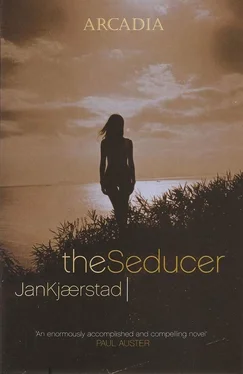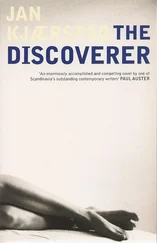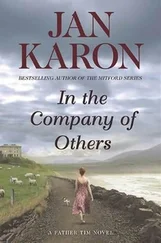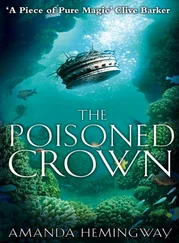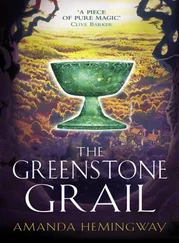No wonder then that Jonas Wergeland conceived a very special affection for organs, after lying for half a year on his back, listening to that blend of air and sound, the creaking of the sliders and clicking of the stops, while gazing at the swell, the little house, seeing how the little doors were opened and closed as his father regulated the volume with his foot and how the abstracts, trackers and tracker wires, all the filigree network surrounding him, moved in time with the movements of his father’s fingers. Of all the pieces of jewellery Jonas Wergeland saw in his life, Aunt Laura’s included, none was more beautiful than the organ with its tin and lead, its copper and ebony, against a backing of pine. Jonas was never fazed by computers and their microchips, not even the control room at NRK could impress someone who had seen an organ from the inside: the world, as it were, from the wrong side.
For a long time Jonas believed it was Nefertiti’s death that had driven him into the organ chest, but the real cause lay, of course, in the future. Not until he was a grown man, looking back over a long distance, did Jonas understand that his time inside the organ had equipped him for experiences and ordeals that were to come later in life.
But already that autumn Jonas had grasped that, in the little door in his father’s office, the one leading, that is, to the organ chest, he had found an unusual and original angle on life as a whole. Later, when faced with any apparently complex phenomenon, he would always look for this little back door, this entrance that would take him to the backside or the inside and provide him with a totally different viewpoint. ‘Crawl inside the organ,’ he would say to himself. So when, for example, Jonas stumbled across the Comoro Islands, he knew right away that this could be one of those rare angles that would lead him to the backside of a complexity, like someone taking you behind a grand building and showing you that it is a flat on a film set.
In later life Jonas Wergeland held the belief that everyone should have the chance to crawl inside an organ chest, even if none of them could enjoy the same privilege as himself: to be able to lie inside an organ while your own father sets the world to rights with his playing in a church built of granite, the stone of your childhood.
Aunt Laura’s flat looked like a bazaar. Where the walls were not covered in oriental rugs, they were hung with objects made of copper and brass; and crawling around the floor was a leopardtortoise with little gems affixed to its shell. Jonas had the feeling that the tortoise was forever going round in circles and that time stood still at Aunt Laura’s.
One day, Jonas was allowed to look on while his aunt cast a little head out of gold, and what intrigued him more than anything else — more than the complicated gravity casting technique — was the way she transformed four old wedding rings into molten gold in the crucible with the aid of a gas-gun, before pouring it into the mould. There was something about that molten gold that he would never forget, a colour and a sheen which he occasionally thought he detected in certain uncommonly good pictures. This was one of Jonas’s favourite occupations: to watch his aunt working, often wearing a leather apron like a blacksmith, in that corner of the room which had the look of a proper little industrial plant. Jonas found it hard to believe that you needed so many tools to make something so small.
Having cleaned and polished the gold head his aunt asked Jonas to fetch the tortoise, which was crawling about the floor. She studied it long and hard, from all angles, before he was allowed to set it back on the floor. And for anyone who has not yet guessed as much, it was, of course, Aunt Laura who first told Jonas the old Chinese tale about the world resting on the back of an ancient creature, Ao, a huge turtle; a tale which Jonas later recounted to Axel and which inspired their hunt for their teachers’ underlying and often shaky propositions.
In many ways, his visits to Aunt Laura’s flat were akin to crawling inside the organ, although in the one instance Jonas had to lie on a hard wooden plank, while in the other he sank back onto soft silk cushions. In June 1964, the same year, strangely enough, when the James Bond film From Russia With Love went on general release in Norway, Nikita Khrushchev paid a visit to that country and while he was there Werna Gerhardsen, wife of the Norwegian prime minister, invited the first lady of the Soviet Union to pay a call on one of her neighbours in the Tøyen tenement where she lived, so that Madame Khrushchev could meet ‘a typical Norwegian family’ and see how they lived — the whole thing duly covered by the national press, naturally. Jonas often thought, laughing to himself, what a sensation it would have caused if the two first ladies and the whole entourage of reporters had rung the wrong doorbell and called instead on Aunt Laura, who happened to live in the same building as Prime Minister Gerhardsen. To some extent, however, he decided on reflection, it would not have been so bad, because in many ways Aunt Laura’s flat provided a different and necessary angle on Norwegian society. And there were times, when he was lying on his back on the sofa in Tøyen with a bowl of pistachio nuts on his chest, that Jonas saw it all so clearly: It was Einar Gerdharsen’s flat, right over his head, that was unreal and these things round about him, including Aunt Laura with a lump of gold on the anvil, that was the true Norway.
The flat’s unique character also owed something to the absence of a television. ‘What do I want with a television when I have forty screens in my living room, and every one of them presenting a wonderful story?’ Aunt Laura would say, pointing to the rugs on the walls around her. Jonas knew what she meant; he liked lying on the sofa, taking in one rug after another. If you tired of one — its colours, its patterns — you only had to let your eye move on. Although he did not know it, in this Jonas was anticipating the possibility that would be open to television viewers of the future, to switch from one channel to another using a remote control.
Aunt Laura was totally absorbed in her work at the bench at the far end of the room, and Jonas had gone over to pour her some more tea — as usual he had no idea what sort of tea it was, but it smelled good. His aunt was correcting the lineaments of the little gold heart ever so carefully with a graver. It was a fine sight, his aunt with her black-lined eyes and blood-red mouth bent over gold and silver, hand moving purposefully and surely. As a small boy Jonas had been allowed to sit alongside her and play with tongs and a piece of silver plate and was thus able to experience for himself the solemn, almost sensual feeling of bending the silver. He could sympathize with his aunt’s love and respect for these malleable metals, their durability: silver and, even more so, gold, metal of the gods, metal of the sun.
Jonas left the teapot with his aunt and went back to the sofa, where he sank down into the pile of cushions with one of his aunt’s sketchbooks, her ‘travel journals’ in his hands. He opened it at random and was promptly confronted with something that made him start: drawings of penises covered in rings, or with little swellings like warts. ‘What’s that?’ he asked, curious and a little afraid, holding up the book. Aunt Laura barely glanced up from under her black-lined eyelids then quietly went on working, quite unperturbed, on the gold head, while she explained to Jonas that in many societies, even in the West, men pierced holes in their members for rings and little metal rods. ‘If, for example, you have a pin stuck through the head of the penis, it’s known as ampallang ,’ his aunt said matter-of-factly. ‘And if you have a ring, preferably of gold and set with small precious stones, through the skin at the side of the scrotum, that’s called hafada .’ As for the lumpy penises, those swellings he saw there, those were pearls, surgically inserted under the skin. Her aunt looked up at him. What was he making faces for? Why couldn’t men wear pins and pearls on their penises? They stuck them in their ties, didn’t they?
Читать дальше
